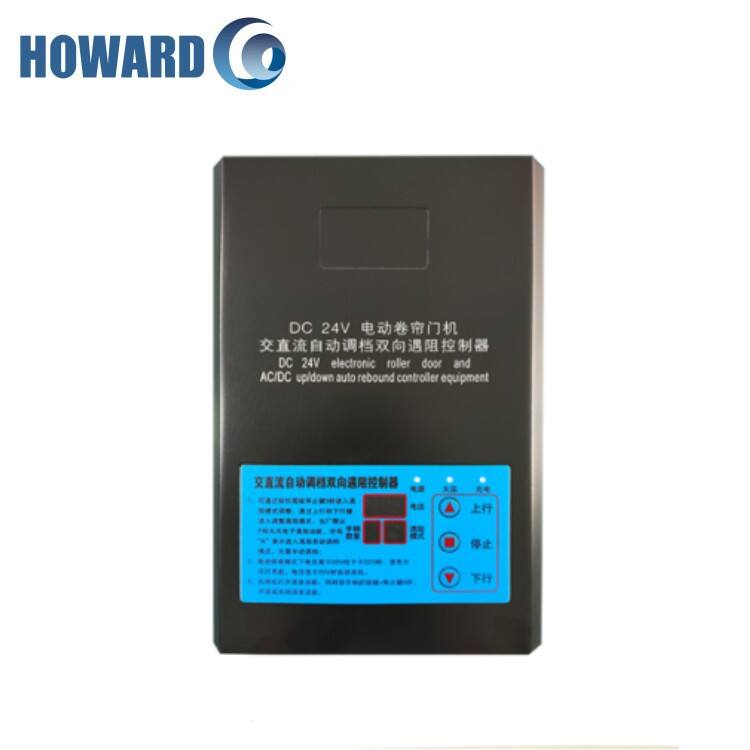The Critical Role of DC UPS in Protecting Security Systems
Ensuring Reliability in Critical Security Infrastructures with DC UPS
Security systems today need reliable power sources if they're going to run all day every day without interruption. DC UPS systems, which stands for Direct Current Uninterruptible Power Supply, provide that crucial reliability needed for things like fire alarm systems, camera networks, and door access controls. These setups help meet those important safety standards set by organizations such as UL 1989 and IEC 62368. What makes them stand out is how they avoid having just one weak spot in the system. Most installations come with multiple batteries working together and automatically balance the workload between them. This approach creates something much more dependable than older style backup solutions we've seen in the past.
Zero Switch-Over Time for Uninterrupted System Operation
Even brief power interruptions can compromise security operations. DC UPS systems transition to backup power in under 2 milliseconds—faster than most sensors can detect a voltage drop. This near-instantaneous response prevents alarm resets, camera reboots, or gaps in data recording during grid fluctuations, maintaining system integrity without disruption.
Protection Against Power Outages, Surges, and Voltage Fluctuations
The industrial grade DC UPS units come with several layers of protection built right in. First off, there's the active power factor correction (PFC) which helps stabilize what comes in from the wall socket. Then we have surge suppression rated at 4 kilovolts to take on those nasty lightning strikes that can fry equipment. And let's not forget about the deep discharge cutoff feature that actually extends battery life when power goes out for days on end. These systems deliver steady 12 volt, 24 volt, or even 48 volt DC output no matter what kind of electrical mess might be coming in. That means critical security systems stay running even when storms knock out the grid or local utilities struggle with brownouts and blackouts. Facility managers know this reliability makes all the difference during emergencies when every second counts.
Core Applications of DC UPS in Security and Networking Equipment
Powering Burglar and Fire Alarm Control Panels
When it comes to why alarm systems fail, power cuts rank right at the top of the list. The Ponemon Institute reported back in 2023 that nearly three quarters (that's 74%) of all problems with fire and burglary alarms actually trace back to some kind of electrical problem. This is where DC UPS systems come into play. These backup power solutions keep control panels running even when the main electricity goes down, so nobody misses important warnings or gets stuck with annoying false alarms. What makes these systems work well? They include built-in surge protection plus those multi stage charging processes that help keep 12 volt and 24 volt systems powered consistently. And this matters because people need their emergency signals to work reliably when it really counts.
Supporting CCTV, DVRs, NVRs, and PoE Switches
Continuous video surveillance depends on uninterrupted power. Modern DC UPS units provide 40W–300W outputs tailored for cameras, recorders, and PoE switches, featuring advanced load balancing to prioritize essential devices. This ensures no footage is lost during outages and eliminates reboot delays, preserving critical video evidence for forensic review.
Enabling Reliable Access Control and Intercom Systems
During blackouts, electronic locks and intercoms must remain functional to maintain physical security. DC UPS systems supply direct 48V backup power to PoE-based door controllers, bypassing inefficient AC-to-DC conversions. This supports biometric scanners, remote unlocking, and real-time communication without downtime.
Backing Up Routers, Switches, and Cellular Communicators
In IoT-driven security ecosystems, network continuity is paramount. DC UPS solutions offer sub-5ms failover to protect 12V/24V routers and 5G failover modems, operating at 93% efficiency—significantly higher than conventional AC UPS units. This ensures alarm signals, sensor data, and cloud communications remain uninterrupted during extended power loss.
Why DC UPS Outperforms AC UPS for Low-Voltage Security Devices
Higher efficiency through direct DC-to-DC power conversion
Direct current UPS systems bypass those pesky energy losses from AC inversion since they just send power straight from the battery to whatever device needs it. Efficiency rates hover around 92 to 95 percent for these systems, compared to regular AC UPS units that usually only hit about 80 to 85 percent because they have to convert AC to DC and then right back again. That extra step costs them. For things like low voltage security gear such as door access systems and network switches, this matters a lot. Cutting down on wasted energy means better performance overall while also being kinder to the environment in the long run.
Reduced energy loss and heat generation compared to AC UPS
Eliminating AC conversion stages reduces thermal output by 30–40%. Lower heat production extends component life and enables compact, fanless designs suitable for enclosed cabinets. A 2020 analysis found that DC UPS installations required 35% less cooling infrastructure in security environments, reducing operational costs and space requirements.
Improved safety and compatibility with sensitive electronics
DC power provides stable voltage within ±1%, avoiding the harmonic distortion common in AC systems. This precision meets the tight 2–5% tolerance of modern PoE cameras and IoT sensors. Additional protections such as reverse polarity prevention minimize damage risks during installation or maintenance, enhancing overall system resilience.
Expanding Use Cases: DC UPS in Industrial Automation and Edge IoT
Supporting Industrial Automation and Mission-Critical Sensors
In manufacturing, DC UPS systems sustain programmable logic controllers (PLCs) and safety sensors, preventing costly halts from voltage sags or micro-outages. In regulated industries like pharmaceuticals and chemicals, they ensure environmental monitoring systems remain online during power transitions, helping maintain compliance with stringent operational standards.
Role in Edge Computing and Remote Monitoring Systems
Edge computing is pushing up the need for DC UPS systems in those hard-to-reach IoT setups out in the field. Looking at market trends, experts are talking about the battery backup industry hitting around $43.64 billion by 2034. The main drivers behind this growth? Well, 5G rollout and all that decentralized processing stuff. Industrial sectors and telecom companies alone are expected to contribute nearly a third of this expansion according to GlobeNewswire from last year. These days, most DC UPS units come ready to go right out of the box. That makes installation much faster when setting up cellular towers or integrating into smart grid infrastructure points across various locations.
Growing Demand for Rugged, Industry-Specific DC UPS Solutions
Mining sites, oil rigs, and gas facilities all face tough conditions that demand durable power systems. These days, military spec DC UPS units can handle temperatures ranging from minus 40 degrees Celsius right up to 75 degrees Celsius. They come equipped with mounts that absorb vibrations and casings that resist corrosion. The modular setup means techs on site can replace batteries without turning off whatever equipment they're powering. This keeps things running smoothly even when workers are stuck far away from civilization or dealing with dangerous surroundings.
Advanced Monitoring, Safety, and Compliance Features in Modern DC UPS
Built-in protections: deep discharge cutoff and reverse current prevention
Modern DC UPS units come equipped with something called deep discharge cutoff to stop batteries from wearing out too fast and causing system failures. When the voltage drops below 11.5 volts, which is pretty much the danger zone for standard 12 volt systems, these units automatically cut off power to whatever is connected. Studies suggest this feature can actually double the lifespan of batteries compared to older models without protection. Another important safety feature worth mentioning are reverse current blockers. These components keep the UPS separated from the rest of the system while someone is working on it, which means no more worrying about dangerous sparks flying around in those security control panels that need to stay online all day long for monitoring purposes.
Real-time monitoring via alarm signals and relay outputs
The better models come with both sound and light alerts plus relay closures when something goes wrong, covering more than twelve different problems like when the AC cuts out or batteries run low. Industrial research has found that facilities using SNMP remote monitoring cut down on those urgent service requests by around two thirds because they can fix issues before they become emergencies. Looking at actual field reports, about ninety two percent of power problems get sorted out long before backup batteries even kick in at places where these monitoring systems are installed.
IoT integration and smart remote management capabilities
Cloud-connected DC UPS platforms support REST APIs for automated firmware updates, load prioritization, and anomaly detection. A 2024 survey of automation engineers found that 78% of sites using IoT-integrated UPS achieved 99.999% uptime by receiving early warnings for irregular voltage patterns—often days before potential failures.
Compliance with UL, IEC standards and DIN-rail design for industrial use
DC UPS units certified under UL 1989 must pass through 23 different safety checks during manufacturing. These include tests for short circuit recovery and preventing thermal runaway situations which are absolutely necessary when getting insurance approval for equipment installed inside fire rated cabinets. The DIN rail mounting system follows EN 60715 standards, making installation much easier since no tools are needed even in those tight control panel spaces where every millimeter counts. Most electricians we talk to mention space constraints as their biggest headache on site anyway. Around four out of five technicians rank efficient use of space as top priority according to recent industry surveys from last year. That's why companies adopting these designs tend to breeze through safety inspections most of the time, passing initial assessments successfully about 9 out of 10 times across various regulated industries.
Frequently Asked Questions
What is a DC UPS system?
A DC UPS system stands for Direct Current Uninterruptible Power Supply, and it's designed to provide reliable power backup for critical systems like security infrastructures.
How does DC UPS improve power reliability for security systems?
DC UPS systems offer zero switch-over time, transitioning to backup power in under 2 milliseconds to prevent system disruptions.
Why is DC UPS preferred over AC UPS for low voltage devices?
DC UPS bypasses energy losses from AC inversion and offers higher efficiency rates around 92 to 95%, compared to 80 to 85% for AC UPS units, making it better for low voltage security devices.
What applications benefit from DC UPS systems?
DC UPS systems are ideal for burglar and fire alarm control panels, CCTV systems, access control systems, and routers, among other applications requiring reliable power backup.
Table of Contents
- The Critical Role of DC UPS in Protecting Security Systems
- Core Applications of DC UPS in Security and Networking Equipment
- Why DC UPS Outperforms AC UPS for Low-Voltage Security Devices
- Expanding Use Cases: DC UPS in Industrial Automation and Edge IoT
- Advanced Monitoring, Safety, and Compliance Features in Modern DC UPS
- Frequently Asked Questions




